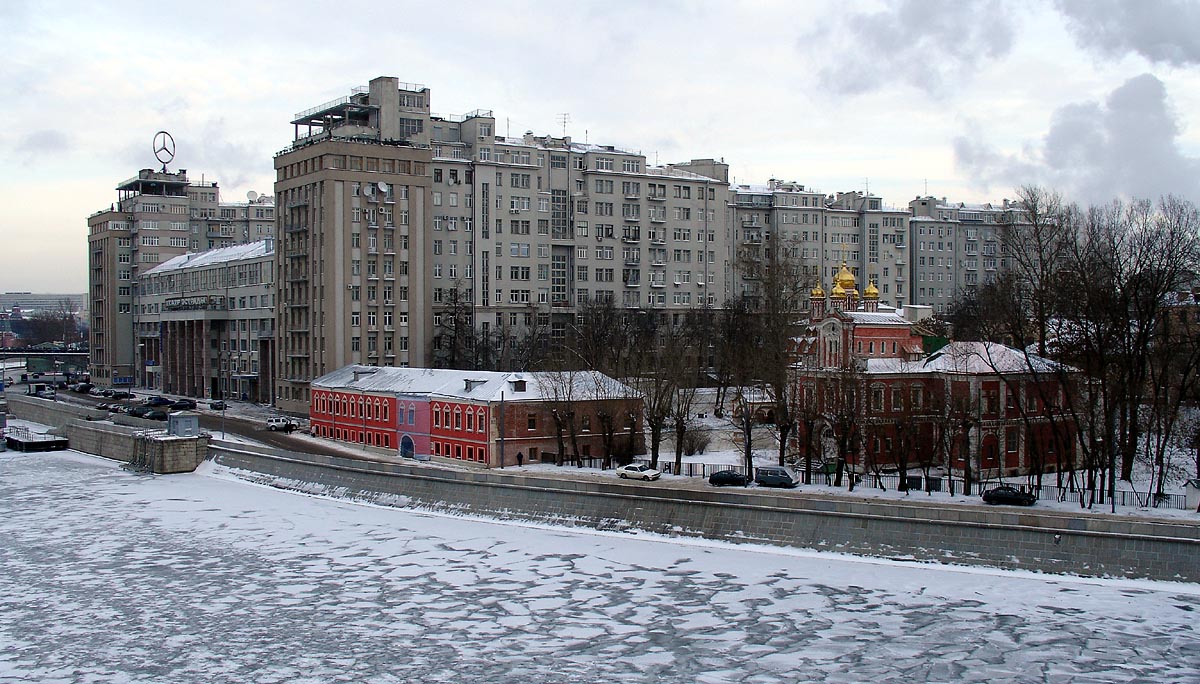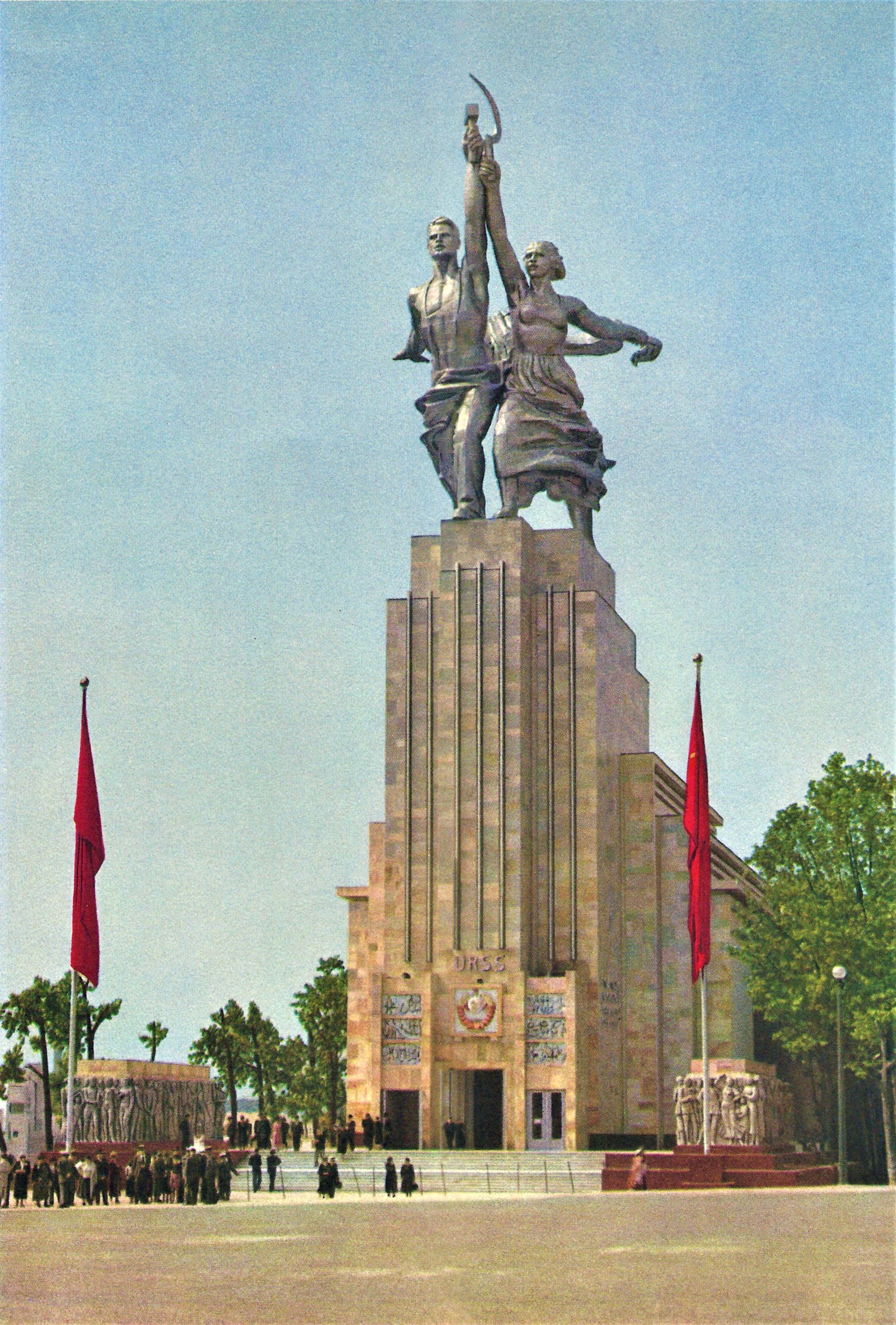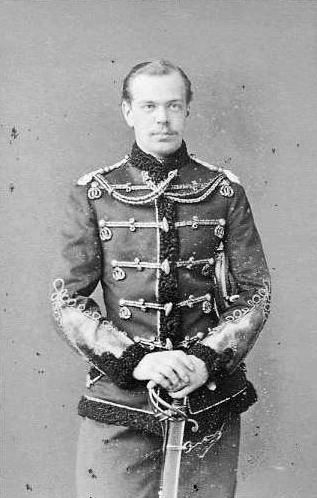|
Boris Iofan
Boris Mikhailovich Iofan ( rus, Борис Михайлович Иофан, p=ɪɐˈfan; April 28, 1891 – March 11, 1976) was a Soviet architect of Jewish origin, known for his Stalinist architecture buildings like 1931 House on the Embankment and the 1931–1933 winning draft of the Palace of the Soviets. Background Born in Odesa, Iofan graduated in 1916 from Italy's ''Regio Istituto Superiore di Belle Arti'' (now '' Accademia di Belle Arti'') in Rome with a degree in architecture, initially following the Neoclassical tradition. His first major work was a Barvikha sanatorium for the Party elite (1929), which introduced him to clients at the top of the state. In 1931, Iofan completed the elite block-wide ''House on the Embankment'' (official name Дом Правительства, ''Government Building''). The structure, containing 505 apartments, two theaters and retail stores, became an iconic example of early Stalinism. Boris Iofan was a lifelong resident of this build ... [...More Info...] [...Related Items...] OR: [Wikipedia] [Google] [Baidu] |
Odesa
Odesa (also spelled Odessa) is the third most populous List of cities in Ukraine, city and List of hromadas of Ukraine, municipality in Ukraine and a major seaport and transport hub located in the south-west of the country, on the northwestern shore of the Black Sea. The city is also the administrative centre of the Odesa Raion and Odesa Oblast, as well as a multiethnic cultural centre. As of January 2021 Odesa's population was approximately In classical antiquity a large Greek settlement existed at its location. The first chronicle mention of the Slavic settlement-port of Khadjibey, Kotsiubijiv, which was part of the Grand Duchy of Lithuania, dates back to 1415, when a ship was sent from here to Constantinople by sea. After a period of Grand Duchy of Lithuania, Lithuanian Grand Duchy control, the port and its surroundings became part of the domain of the Ottoman Dynasty, Ottomans in 1529, under the name Khadjibey, Hacibey, and remained there until the empire's defeat in the Russo ... [...More Info...] [...Related Items...] OR: [Wikipedia] [Google] [Baidu] |
Palace Of Soviets
The Palace of the Soviets (russian: Дворец Советов, ''Dvorets Sovetov'') was a project to construct a convention center, political convention center in Moscow on the site of the demolished Cathedral of Christ the Saviour. The main function of the palace was to house sessions of the Supreme Soviet of the Soviet Union, Supreme Soviet in its wide and tall grand hall seating over 20,000 people. If built, the tall palace would have become the world's tallest structure, with an internal volume surpassing the combined volumes of the six tallest American skyscrapers. Boris Iofan won a series of four Architectural design competition, architectural competitions held in 1931–1933 marking the beginning of a sharp turn of Soviet architecture from 1920s Modern architecture, modernism to the monumental Historicism (art), historicism of Stalinist architecture. The individuals behind these events and their motives remain a matter of conjecture and debate. Recent research suppor ... [...More Info...] [...Related Items...] OR: [Wikipedia] [Google] [Baidu] |
Moscow Central Clinical Hospital
The Central Clinical Hospital of the Administrative directorate of the President of the Russian Federation (russian: Центральная клиническая больница c поликлиникой Управления делами Президента Российской Федерации) (also called "Kremlin Hospital", "Kremlyovka" and the "Kremlin Clinic") is a heavily guarded facility 14 kilometres west of the Kremlin in an exclusive, wooded suburban area known as Kuntsevo. It is considered to be the best hospital in Russia. The hospital is guarded by the Federal Protective Service. (in Russian) Among patients are political, business, cultural and scientific elite of Russia (and Soviet Union before 1991, like presidents Yuri Andropov or Konstantin Chernenko) and representatives of the diplomatic corps. The hospital now accepts an increasing number of private, self-paying patients and it is common to pay for one's treatment. While the hospital is open to the publ ... [...More Info...] [...Related Items...] OR: [Wikipedia] [Google] [Baidu] |
Pyotr Kapitsa
Pyotr Leonidovich Kapitsa or Peter Kapitza ( Russian: Пётр Леонидович Капица, Romanian: Petre Capița ( – 8 April 1984) was a leading Soviet physicist and Nobel laureate, best known for his work in low-temperature physics. Biography Kapitsa was born in Kronstadt, Russian Empire, to Bessarabian-Volhynian-born parents Leonid Petrovich Kapitsa ( Romanian ''Leonid Petrovici Capița''), a military engineer who constructed fortifications, and Olga Ieronimovna Kapitsa from a noble Polish Stebnicki family. Besides Russian, the Kapitsa family also spoke Romanian. Kapitsa's studies were interrupted by the First World War, in which he served as an ambulance driver for two years on the Polish front. He graduated from the Petrograd Polytechnical Institute in 1918. His wife and two children died in the flu epidemic of 1918–19. He subsequently studied in Britain, working for over ten years with Ernest Rutherford in the Cavendish Laboratory at the University of C ... [...More Info...] [...Related Items...] OR: [Wikipedia] [Google] [Baidu] |
Baumanskaya (Moscow Metro)
Baumanskaya (russian: Бауманская) is a station on the Arbatsko-Pokrovskaya Line of the Moscow Metro, named after the revolutionary Nikolai Bauman. It was designed by Boris Iofan and Yury Zenkevich and opened in 1944. The Art Deco design features white marble pylons with rounded corners, projecting, fluted piers faced with red ceramic tile, and decorative ventilation grilles. In the bays between each set of piers are bronze sculptures by V.A. Andreev depicting Russian soldiers and workers of the home front during World War II. At the end of the platform is a mosaic portrait of Vladimir Lenin. This station is very busy, as one of the biggest Moscow institutes (Moscow State Technical University) is located not far away. The station was closed in 2015 for repairs, maintenance and escalator shaft replacement. The escalators at Baumanskaya were the oldest on the network, having operated non-stop since 1944. They were the last H-series escalators in operation on the whole ... [...More Info...] [...Related Items...] OR: [Wikipedia] [Google] [Baidu] |
Worker And Kolkhoz Woman
''Worker and Kolkhoz Woman'' () is a sculpture of two figures with a sickle and a hammer raised over their heads. The concept and compositional design belong to the architect Boris Iofan It is 24.5 metres (78 feet) high, made from stainless steel by Vera Mukhina for the 1937 World's Fair in Paris, Richard Overy, ''The Dictators: Hitler's Germany, Stalin's Russia'', p260 and subsequently moved to Moscow. The sculpture is an example of socialist realism in an Art Deco aesthetic. The worker holds aloft a hammer and the kolkhoz woman a sickle to form the hammer and sickle symbol. History The sculpture was originally created to crown the Soviet pavilion of the 1937 World's Fair. The organisers had placed the Soviet and German pavilions facing each other across the main pedestrian boulevard at the Trocadéro on the north bank of the Seine. Mukhina was inspired by her study of the classical '' Harmodius and Aristogeiton'', the ''Winged Victory of Samothrace'' and ' ... [...More Info...] [...Related Items...] OR: [Wikipedia] [Google] [Baidu] |
Russian State Agrarian University – Moscow Timiryazev Agricultural Academy
Moscow Timiryazev Agricultural Academy (full name in russian: Российский государственный аграрный университет — МСХА имени К.А. Тимирязева) is one of the oldest agrarian educational institutions in Moscow, Russia. It was founded on December 3, 1865. It is under the Supervisory of the Russian Ministry of Agriculture. It was named for Kliment Timiryazev Kliment Arkadievich Timiryazev (russian: Климент Аркадьевич Тимирязев, surname sometimes transliterated as Timiriazev; – 28 April 1920) was a Russian Imperial botanist and physiologist and a major proponent of the Ev ..., a Russian botanist and physiologist and major proponent of evolution by natural selection. Prior to this it was called the Petrovsky Agricultural Academy. References External links * (in Russian) Universities in Moscow Agricultural universities and colleges in Russia Educational institutions establishe ... [...More Info...] [...Related Items...] OR: [Wikipedia] [Google] [Baidu] |
Lev Rudnev
Lev Vladimirovich Rudnev (russian: Лев Владимирович Ру́днев; – November 19, 1956) was a Soviet architect, and a leading practitioner of Stalinist architecture. Biography Rudnev was born to the family of a school teacher in the town of Opochka (other sources state Novgorod). He graduated from the Riga Realschule (now the Riga 1st State Grammar School) and entered the Imperial Academy of Arts in Saint Petersburg (1906). At the Academy he studied painting under Leon Benois and architecture under Ivan Fomin. From 1911 Rudnev was a success in various architectural competitions, and in 1915 he became a certified specialist in the art of architecture. After the February Revolution Rudnev won the competition for the Monument to the Fighters of the Revolution on the Field of Mars in Petrograd (March 1917). The avant-garde monument there was built according to his design After the end of the Second World War, Lev Rudnev took active part in reconstructing the ... [...More Info...] [...Related Items...] OR: [Wikipedia] [Google] [Baidu] |
Main Building Of Moscow State University
The main building of Moscow State University (in Russian ''Гла́вное зда́ние МГУ'') a , 36-level (in its central part) skyscraper in Moscow, Russia. Designed by Lev Rudnev as the headquarters of Moscow State University, it is the tallest of seven Moscow skyscrapers in the Stalinist architectural style constructed between 1947 and 1953. It was until 1990 the tallest building in Europe before being surpassed by the Messeturm in Germany. It remains the tallest educational building in the world. Features The skyscraper has 36 levels in its central part and is tall. Its roof () is topped by a 58-metre spire which ends with a 12-ton five-pointed star. Lateral towers are lower than the central one; two 18 and 9 storey dormitory wings define, with the central corpus of the complex, a ''cour d'honneur'' courtyard. Among the statues which decorate the building is a sculpture by Vera Muchina representing a couple of students and a statue by N. Tomsky of Mikhail Lomo ... [...More Info...] [...Related Items...] OR: [Wikipedia] [Google] [Baidu] |
Operation Barbarossa
Operation Barbarossa (german: link=no, Unternehmen Barbarossa; ) was the invasion of the Soviet Union by Nazi Germany and many of its Axis allies, starting on Sunday, 22 June 1941, during the Second World War. The operation, code-named after Frederick Barbarossa ("red beard"), a 12th-century Holy Roman emperor and German king, put into action Nazi Germany's ideological goal of conquering the western Soviet Union to repopulate it with Germans. The German aimed to use some of the conquered people as forced labour for the Axis war effort while acquiring the oil reserves of the Caucasus as well as the agricultural resources of various Soviet territories. Their ultimate goal was to create more (living space) for Germany, and the eventual extermination of the indigenous Slavic peoples by mass deportation to Siberia, Germanisation, enslavement, and genocide. In the two years leading up to the invasion, Nazi Germany and the Soviet Union signed political and economic pacts fo ... [...More Info...] [...Related Items...] OR: [Wikipedia] [Google] [Baidu] |
Alexander III Of Russia
Alexander III ( rus, Алекса́ндр III Алекса́ндрович, r=Aleksandr III Aleksandrovich; 10 March 18451 November 1894) was Emperor of Russia, King of Poland and Grand Duke of Finland from 13 March 1881 until his death in 1894. He was highly reactionary and reversed some of the liberal reforms of his father, Alexander II. This policy is known in Russia as "counter-reforms" ( rus, контрреформы). Under the influence of Konstantin Pobedonostsev (1827–1907), he opposed any reform that limited his autocratic rule. During his reign, Russia fought no major wars; he was therefore styled "The Peacemaker" ( rus, Миротворец, Mirotvorets, p=mʲɪrɐˈtvorʲɪt͡s). It was he who helped forge the Russo-French Alliance. Personality Grand Duke Alexander Alexandrovich was born on 10 March 1845 at the Winter Palace in Saint Petersburg, Russian Empire, the second son and third child of Tsesarevich Alexander (Future Alexander II) and his first wif ... [...More Info...] [...Related Items...] OR: [Wikipedia] [Google] [Baidu] |
Alexander I Of Russia
Alexander I (; – ) was Emperor of Russia from 1801, the first King of Congress Poland from 1815, and the Grand Duke of Finland from 1809 to his death. He was the eldest son of Emperor Paul I and Sophie Dorothea of Württemberg. The son of Grand Duke Paul Petrovich, later Paul I, Alexander succeeded to the throne after his father was murdered. He ruled Russia during the chaotic period of the Napoleonic Wars. As prince and during the early years of his reign, Alexander often used liberal rhetoric, but continued Russian absolutism, Russia's absolutist policies in practice. In the first years of his reign, he initiated some minor social reforms and (in 1803–04) major liberal educational reforms, such as building more universities. Alexander appointed Mikhail Speransky, the son of a village priest, as one of his closest advisors. The Collegium (ministry), Collegia were abolished and replaced by the State Council of Imperial Russia, State Council, which was created to improve legis ... [...More Info...] [...Related Items...] OR: [Wikipedia] [Google] [Baidu] |





.jpg)
